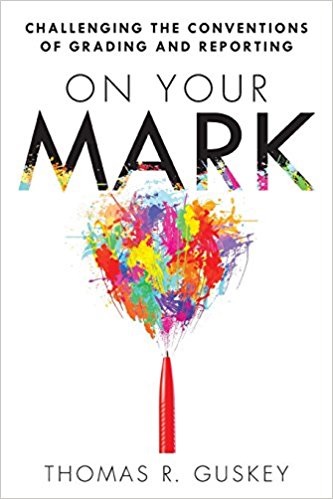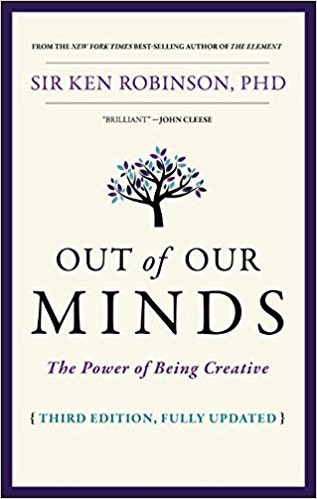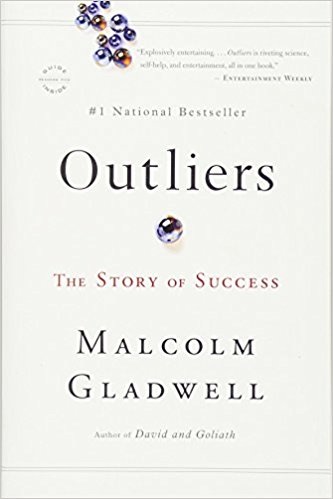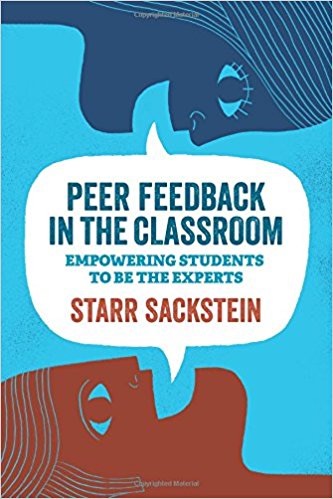Archive for the ‘Leadership Books’ Category
Friday, September 19th, 2025
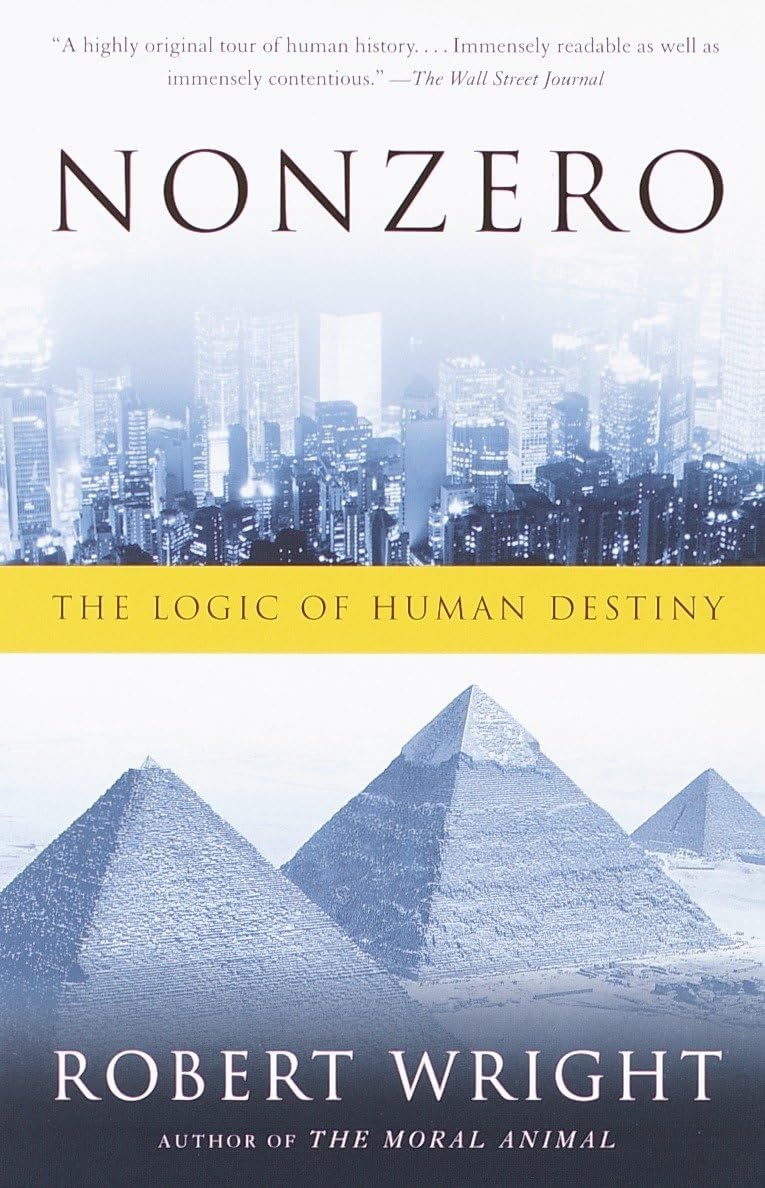
Nonzero: The Logic of Human Destiny by Robert Wright takes us from the first forms of life to our modern world. It shows how biological evolution and cultural evolution have followed parallel paths from hunter gatherer societies, through the industrial revolution, to the information age. This is a great compliment to the way history is generally taught in schools and belongs in every school library.
Introduction: The Storm Before the Calm
- About fifty years ago John von Neumann and Oskar Morgenstern invented game theory. They made the distinction between “zero-sum” and “non-zero-sum” games. In zero-sum games, the fortunes of the players are inversely related. In games like tennis, chess, and boxing, one contestant’s gain is the other’s loss. In non-zero-sum games, one player’s good news need not be bad news for the other. It is even possible for both players needs to overlap entirely.
- Wright believes that the paths of evolution and human history have been driven primarily by non-zero-sumness as we evolved from the primordial soup to the World Wide Web. New technologies often permit or encourage new, richer forms of non-zero-sum interactions. At the same time, social structures have evolved to convert non-zero-sum situations into more positive lifestyles.
Part 1: A Brief History of Humankind – 1. The Ladder of Cultural Evolution
- Human culture has evolved. Some refer to early human cultures as savage. They are followed by barbarians, and finally civilization. Some scientists argue against this evolutionary arrow as one that is inevitable. Robert, however, believes that you can see this arrow beginning tens of thousands of years ago and continuing to the present. He also believes that looking ahead you can see where it is going.
2. The Way We Were
- An important concept when it comes to cultural evolution is reciprocal altruism. This is reinforced buy the quote “the best place to store food you can’t eat is in another person’s belly.” Cultures are more likely to advance if there are large animals that can only be subdued when many people collaborate. There are examples in Africa were people cooperated so they could all eat a giraffe.
- One issue causing complexity is cheating. When someone notices that another is not doing their share, they are less likely to grant them a full share of the catch. Bargaining can also add some zero-sum aspect to what otherwise is a non-zero-sum experience. Once the most you will spend on a car and the least the dealer will sell it for is established, the bargaining that takes place is zero-sum even though the sale itself is usually a non-zero-sum deal.
3. Add Technology and Bake for Five Mellennia
- After the early North American people crossed the frozen land bridge from Asia, the ice melted and was replace by the Bering Sea. This created two cultural petrie dishes where cultural evolution could occur. Again we see that places where acquisition of food required cooperation featured more complex cultures. Eskimos living on the coast had to cooperate in order to hunt whales in multiple boats. Capital investment to build boats and division of labor to create harpoon specialists and helmsmen are things we take for granted.
- The Big Man emerges to lead villages and multiple villages. He requires each group to contribute, which can be seen as an early form of taxation. He employs specialists to monitor the environment to prevent over fishing and over grazing. Relying on many villages or groups is also a way to spread risk. Big men had to be well spoken, have a good memory, work to make peace, and lead his followers into battle if necessary.
4. The Invisible Brain
- There should be close connection between population size and density on the one hand and technological and social complexity on the other. Cheap transportation and cheap communication are also necessary. The negative side of population growth is environmental stress. The New World lagged behind the old World by several millennia, which is how far the New World lagged behind the Old World in reaching early technological thresholds, such as agriculture, and early political thresholds, such as chiefdoms. This explains the cultural differences between them when they came in contact with each other.
5. War? What is it Good For?
- While you can argue that wars are non-zero-sum in that they are bad for both sides, lose-lose, you generally see wars as zero-sum when one side conquers and subjugates the other. Regardless, wars tend to produce more complex cultures as villages join for common protection or one side gets larger when they win a war and add the losers to their population.
Posted in Book Summaries, Education Books, Leadership Books | Comments Off on Nonzero: The Logic of Human Destiny by Robert Wright
Tuesday, November 8th, 2011
Now You See It: How the Brain Science of Attention WIll Transform the Way We Live, Work, and Learn by Cathy N. Davidson (© 2011, Viking Penguin: New York, NY) shows how the phenomenon of attention blindness shapes our lives, and how it has led to one of the greatest problems of our historical moment. Many of us toil in schools and workplaces that were designed for the last century. Cathy believes we will find the answers we need in places where disruption and distraction are producing exciting results. She paints a picture of the future of work and education as she introduces us to visionaries whose ideas will effect us all. Drawing from the fields of brain science, psychology, education, management science, technology, and more, she presents a picture of an interactive world where each of us can make a valued contribution.
Tags: Cathy N Davidson, Now You See It
Posted in Book Summaries, Business Books, Education Books, Leadership Books | Comments Off on Now You See It by Cathy Davidson
Thursday, May 7th, 2015
On Your Mark: Challenging the Conventions of Grading and Reporting ©2015 by Thomas R. Guskey explains to all teachers why their grading practices are probably wrong for many reasons. If you teach or know teachers you need to share this book. Click the icon at the bottom of any page to get this essential book.
Thomas R. Guskey
- Thomas is Professor of Educational Psychology in the College of Education at the University of Kentucky. A graduate of the University of Chicago, he began his career in education as a middle school teacher, served as an administrator in Chicago Public Schools, and was the first Director of the Center for the Improvement of Teaching and Learning. He is the author/editor of 18 books and over 200 articles. Dr. Guskey served on the Policy Research Team of the National Commission on Teaching & America’s Future, on the Task Force to develop the National Standards for Staff Development, and recently was named a Fellow in the American Educational Research Association. His books include Developing Standards-Based Report Cards (2010), Practical Solutions for Serious Problems in Standards-Based Grading (Ed.) (2009), The Principal as Assessment Leader (Ed.) (2009), The Teacher as Assessment Leader (Ed.) (2009), and Benjamin S. Bloom: Portraits of an Educator (Ed.) (2006).
1. Define the Purpose of Grades
- Guskey finds that there is little in the way of formal teacher preparation that deals with this subject. Teachers, therefore, tend to grade the way they were graded. As for report cards, they are usually cobbled together by a committee that takes what they like from other schools’ work. The process features enough compromise that everyone ends up with report cards that everyone can stand, but that no one really likes.
- If you want to reform your reporting process the first thing you should do is step back and ask what is your purpose. There might be many and it is likely that no single reporting instrument will serve all your purposes well. While schools and policy makers aim for success by all, if that really happened there would be no variation in grades. This doesn’t happen and teachers and test makers set out to sort students and they tend to be very successful. Bottom line is that your reporting process should be aimed at facilitating student learning. Guskey recommends that whatever your purpose is, it should be printed on your report.
Posted in Book Summaries, Education Books, Leadership Books | Comments Off on On Your Mark: Challenging the Conventions of Grading and Reporting by Thomas R. Guskey
Monday, April 2nd, 2018
Out of Our Minds: The Power of Being Creative by Sir Ken Robinson explains how much of today’s education is standardized and how we need to make it much more personal in nature. He believes that everyone has a creative capacity and that it’s the schools’ job to facilitate imagination, creativity, and innovation for all. Leaders and teachers in education and all in walks of life should read this book.
1. Out of Our Minds
- As change becomes more frantic, the more creative we need to be. Most organizations recognize this. Unfortunately, while most children think they are creative, most adults think they are not. In this book, Sir Ken takes on why it is essential to promote creativity, the problems with doing so, and how to do it. First, we rely on our imagination to bring to mind things that are not present to our senses. Creativity then is the process of developing original ideas that have value, and innovation is the process of putting new ideas into practice. Everyone has creative capacities. The challenge is to develop them.
- There is a consensus among people in business that they want people who are literate, numerate, who can analyze information and ideas; who can generate new ideas and implement them; and who can communicate clearly and work with other people. Unfortunately, they have worked to impose a culture of standardization and testing that stifles the creativity of students and teachers alike. This may be no surprise as corporate history is littered with the wreckage of companies and industries that were resistant to change. Meanwhile, parents and kids want education to help them find work and become economically independent; and to identify their unique talents that will help them lead a life that has meaning and purpose. Real life is not linear or standardized; it is organic, creative, and diverse.
2. Facing the Revolution
- Ken starts with reviewing the histories of transformative inventions, communications technology, and computers. This gives you a clear notion that the rate of change and innovation is speeding up. It also shows that what was impossible yesterday is routine today. He then takes a look at some possible futures involving things like nanotechnology. In order to deal with the increasing pace of change, Ken feels that our best resource is to cultivate our ability to imagine, create, and innovate. Doing this has to be one of the principal priorities of education and training everywhere. In short, education is the key to our future.
3. The Trouble with Education
- Employers say they want people who can think creatively, who can innovate, who can communicate well, work in teams and are adaptable and self-confident. They also complain that many graduates have few of these qualities. This is not surprising as conventional academic programs are not designed to develop them. We are creating more college graduates than we need and many end up taking jobs for which they are overqualified. The system has intensified programs of standardized testing in language and math with many harmful side effects. Achievement in literacy and math has scarcely budged and subjects viewed as nonessential have suffered. Students who fail to graduate or who graduate but aren’t ready for college suffer even more. It is clearly time to rethink some of our basic ideas about education. Reform is not enough. Education needs to be transformed.
Posted in Book Summaries, Education Books, Leadership Books | Comments Off on Out of Our Minds: The Power of Being Creative by Sir Ken Robinson
Thursday, November 22nd, 2018
Outliers: The Story of Success (©2008, Little Brown: New York, NY) is Malcolm Gladwell’s third mega best seller after The Tipping Point and Blink, both of which are summarized here. Gladwell looks at many notable situations where people or populations stand out from the crowd. He finds that circumstances and effort are more important than talent. There are many lessons here for educators and parents.
The Secret of Roseto
- Roseto is a town in Pennsylvania populated by immigrants from a village in Italy. Although the residents do not have a healthy diet or lifestyle, they do have a very low incidence of heart disease. The entire town is an outlier in this respect. After a great deal of study, it was determined that it was the supportive town culture that helps keep the residents so healthy.
The Importance of Birthdays
- A study of birthdays for stars in hockey, baseball, and soccer shows that players born earlier in the year are more likely to stand out and qualify for better coaching and more playing time. At a young age there is a significant advantage to being born earlier in the year of eligibility. In preadolescence, a twelve-month gap in age represents an enormous difference in physical and mental maturity.
- The birth order effect also operates in schools where the older students in a grade level tend to do better and get placed in higher ability groups. Older children scored up to 12 percentile points higher on the Trends in International Mathematics and Science Study (TIMSS). Teachers seem to sometimes confuse maturity with ability. Schools could put all the students born in the first quarter of the year in the same class and do the same with children born in other parts of the year of eligibility. As it is, many educated parents hold their kids back to insure that they will be older than their classmates which gives them a better chance in education and school sports that are based on grade level rather than age.
Time Trumps Talent-What Really Made the Beatles Great
- Psychological studies have demonstrated that all great artists and people with great expertise got there only after putting in at least 10,000 hours of effort or practice. Even Mozart didn’t make great music until he hit this number at the age of 21. It takes the brain this long to assimilate all that it needs to know to achieve true mastery.
- A club owner from Hamburg went to London looking for bands to play in this club. By pure chance he met an agent from Liverpool who booked the Beatles in his club. Unlike English gigs which seldom lasted more than an hour, the club had the Beatles play for five hours or more a night. All told they performed 270 nights in just over a year and a half. By 1964 they had performed about 1200 times. They were no good on stage when they went to Hamburg and they were very good when they came back.
Tags: Bill Gates, Malcolm Gladwell, Outliers, The Beatles
Posted in Book Summaries, Business Books, Education Books, Leadership Books | Comments Off on Outliers: Gladwell’s 3rd Mega Hit – Revised Summary
Tuesday, August 30th, 2011
Paying Attention: Thoughts on Communication in Schools by Troy Roddy, PhD (©2011, Troy P. Roddy) focuses on what might be the most important leadership topic, and the one most in need of improvement in schools and other institutions. If you ask people what needs to improve, communication will probably be at or near the top of the list. Troy packs excellent advice into 33 quick and easy pages to help anyone improve this important skill. It’s only $2.99 at Amazon. You can follow him on Twitter as @DrTroyRoddy or at his blog.
Tags: Communication, Paying Attention, Troy P. Roddy
Posted in Book Summaries, Education Books, Leadership Books | Comments Off on Paying Attention: Great Communication Tips
Friday, November 10th, 2017
Peer Feedback in the Classroom: Empowering Students to be the Experts by Starr Sackstein tells the story of how she introduced peer feedback and all of its benefits into her classroom and how it can be applied in other subjects. If you try this, not only will your students develop knowledge and skills better, they will also learn vital collaboration and social skills. Buy one for your school now.
Part 1: The Power of Feedback – 1. The Rational for Teaching Students to Provide Peer Feedback
- Every student has the potential to be an expert in something. Step one is to get to know the students so you can identify and expand their strengths. This can allow the students to share their strengths, perspective, ideas, and preferences. This shows students that there is no one right way to learn or teach. Today it is common for students to know more about some topics than teachers do. This should be exciting as students can share expertise. Technology is an area where this often happens.
- The big idea here is to build trust and enthusiasm, which may not be easy and will take time. A key is to teach students self-advocacy. This will make it easier to address specific needs as students will bring them to you. This should start in kindergarten. This will also serve students throughout their lives. In short, students need to know when they need help and how to get it. Asking peers to help can be a great way to grow. Like all chapters, this one ends with reflection questions for teachers.
2. Developing a Supportive Classroom Culture
- Your initial focus is to develop a welcoming respectful learning environment that supports risk-taking and honest sharing. Students need to be comfortable sharing their work and gain confidence in providing feedback. You have to know your students if you are going to develop rapport so start by finding out what you can about their lives and outside interests as you share some of yourself. Respect can’t be assumed; it must be taught explicitly and modeled continuously. Starr suggests you use surveys to learn about students and provides some samples.
- Rituals and routines are essential to developing rapport. You don’t want to be too flexible and you must establish clear expectations. It might help to have students produce things that are intentionally inferior. They should feel safe correcting these items and see that it’s ok to be wrong. The teacher needs to model feedback intentionally so students can see what is expected. This will include praise and questions that should prompt students to think about how to improve their work. Be sure to share errors you have made. Once your rituals are in place you can give students more control as you facilitate from the side. Starr gives examples from her student newspaper class and another teacher’s fifth-grade class.
-
3. What Meaningful Feedback Looks Like
- Step one is to set clear goals and criteria for success. For each assignment, you need to ask is this worthy of feedback? Use questioning activities and discussions and connect work to prior and future learning. Align learning objectives with standards and the big picture of the lesson. Make sure students see exemplars so they know what mastery looks like, but not ones that are identical to the current assignment.
- Feedback needs to be specific, timely, and delivered in a way that works for the receiver. Focus on one or two points at a time. Rather than saying good job, let them know how they have improved their ability to do something specific. When you are critical, provide suggestions for how to improve something. Limit your feedback to the material covered. Avoid giving feedback too soon as you will end up owning the work yourself. Feedback from teachers should be private. Look for nonverbal cues as you give feedback and adjust your tone accordingly. If a student is shutting down say something encouraging and revisit the issue later.
Posted in Book Summaries, Education Books, Leadership Books | Comments Off on Peer Feedback in the Classroom: Empowering Students to be the Experts by Starr Sackstein
Saturday, December 4th, 2010
Personality Poker: The Playing Card Tool for Driving High-Performane Teamwork and Innovation by Stephen M Shapiro builds on decades of research to offer a simple game that provides deep insights regarding yourself, your coworkers, and your organization. The four personality types are represented by 13 traits on the cards of each suit. You can play a solitaire version or an assortment of versions with others.
Click here for my summary of Personality Poker.
A free online version is available at the Personality Poker site.
Tags: Personality Poker, Personality Testing, Stephen Shapiro
Posted in Book Summaries, Business Books, Leadership Books | Comments Off on Personality Poker: Driving High-Performane Teamwork and Innovation by Stephen Shapiro
Tuesday, May 27th, 2025
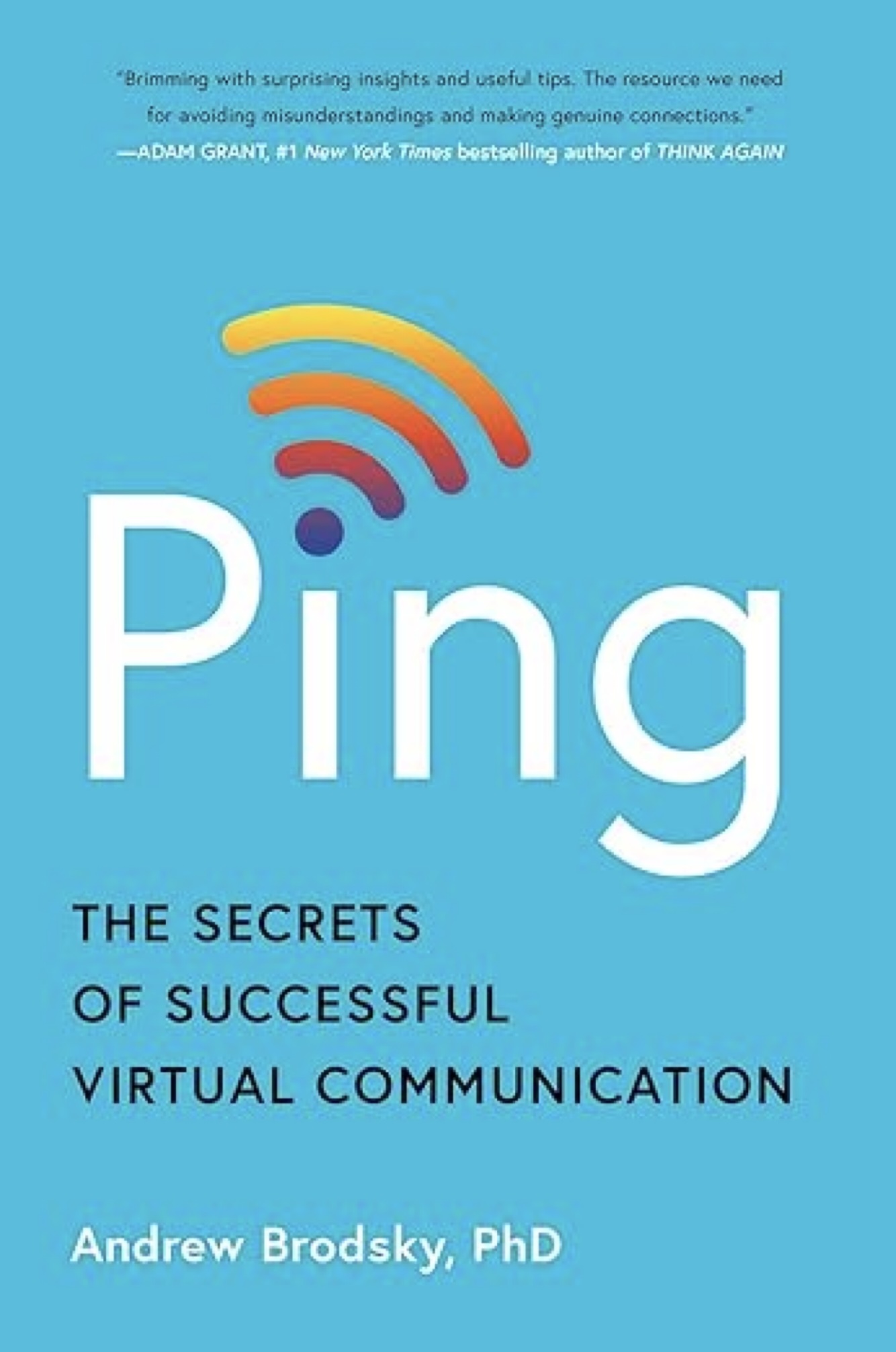
Ping: The Secrets of Successful Virtual Communication by Andrew Brodsky will help you understand which mode of communication to use, when, and why. Be sure to get a copy for your professional development library.
1. The PING Approach
- In addition to in-person, face-to-face communication, there are a variety of virtual methods that you can use to communicate. While face-to-face is usually considered superior, Andrew makes the case that it’s not always the best, depending on the context. This book gives the blueprint that will allow you to leverage technology to improve the quality of your communication. This is important as we are all virtual communicators.
Using Virtual Communication to Get Ahead: 2. To Meet or Not to Meet…That is the Question
- Organizations have a lot of meetings and they are expensive when you consider the total time of the attendees. Meetings need clear goals, agendas, only the people necessary, and time limits. Some are not even necessary. Brainstorming should not start as a group activity. Start by having everyone come up with ideas independently and then share them anonymously with the team. Then get together to discuss, prioritize, and decide what to do.
- Emails are asynchronous communication and should be answered in a day or so. If you need an urgent reply, don’t use email. Don’t have your email app open all day as you will be constantly interrupted. Andrew suggests that you check your email about three times a day.
3. Seeing is Believing. Or Is It?
- Eye contact is just as important in video meetings as it in in face-to-face meetings. Make sure that you have good lighting. (Doug: This is a common mistake.) Avoid back lighting, which can come from lamps or windows when the sun is up. Keep your camera on as no one is impressed by a black screen with a person’s name on it. Don’t use novelty backgrounds, look professional. Bookcases are good. Appearance matters. If you know how others will be dressed, match them. If you don’t know, err on the side of being more formal. Be honest when touting your capabilities. Be sure that you can walk the talk.
Posted in Book Summaries, Business Books, Leadership Books | Comments Off on Ping: The Secrets of Successful Virtual Communication by Andrew Brodsky
Thursday, April 19th, 2012
Power Listening: Mastering the Most Critical Business Skill of All by Bernard T. Ferrari (©2012, Portfolio/Penguin: New York, NY) provides specific lessons in how to improve what may be the single most undervalued and underdeveloped skill for leaders, educators, parents, and students. Bernie makes a compelling case that anyone can improve from a mediocre listener to a power listener. It just takes commitment and practice. This is the rare resource that goes beyond just telling you that listening is important to telling you how to do it well. Every organization should click the icon below to buy more copies of this vital book for everyone in a position of leadership.
Tags: Bernard T. Ferrari, Listening, Power Listening
Posted in Book Summaries, Business Books, Leadership Books | Comments Off on Power Listening: Mastering the Most Critical Business Skill of All – Vital Book







